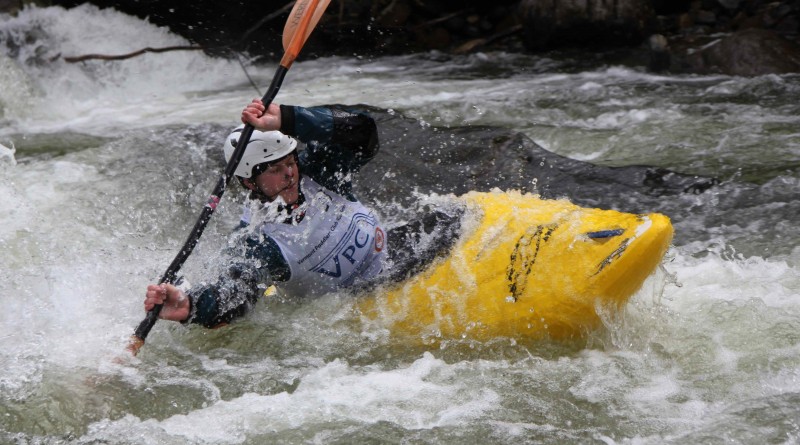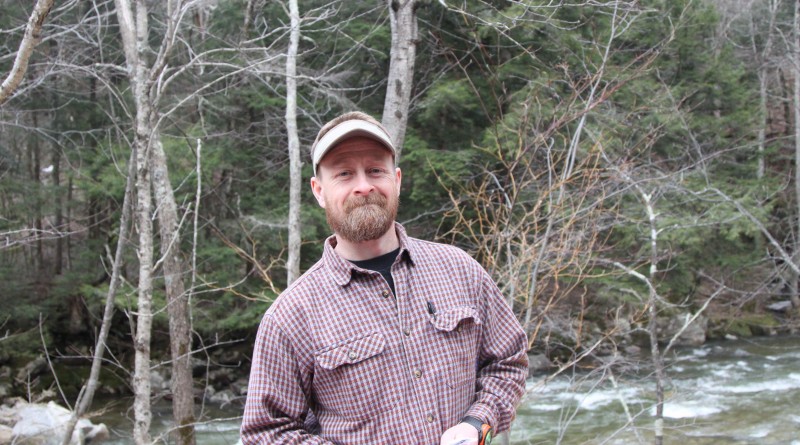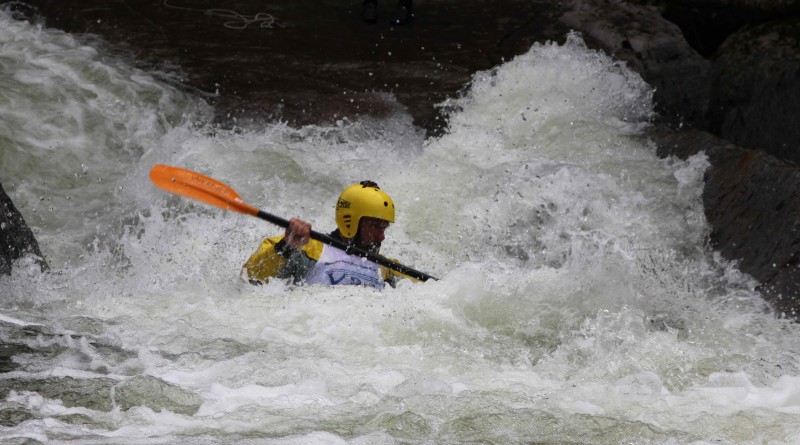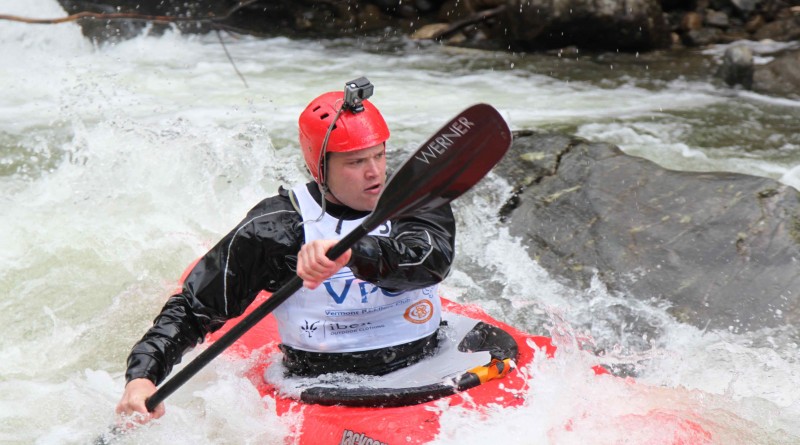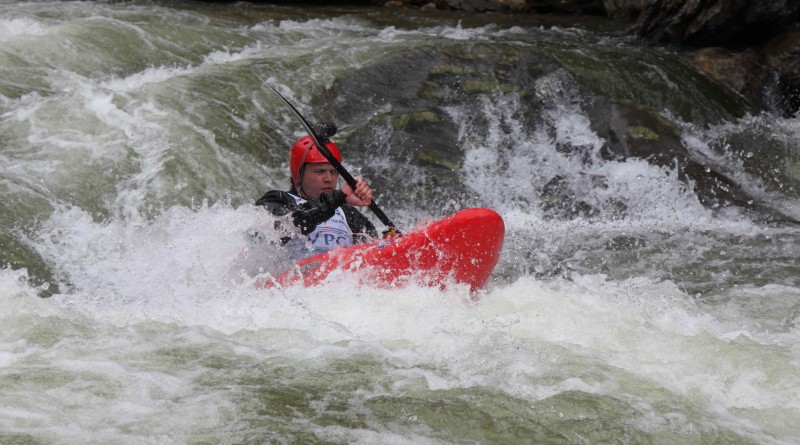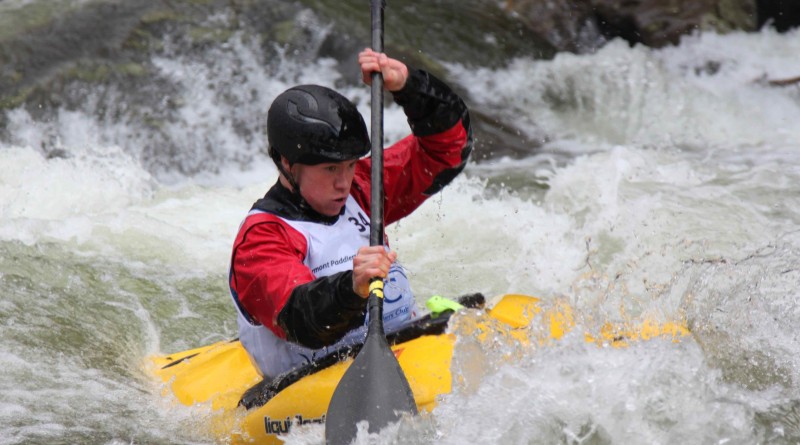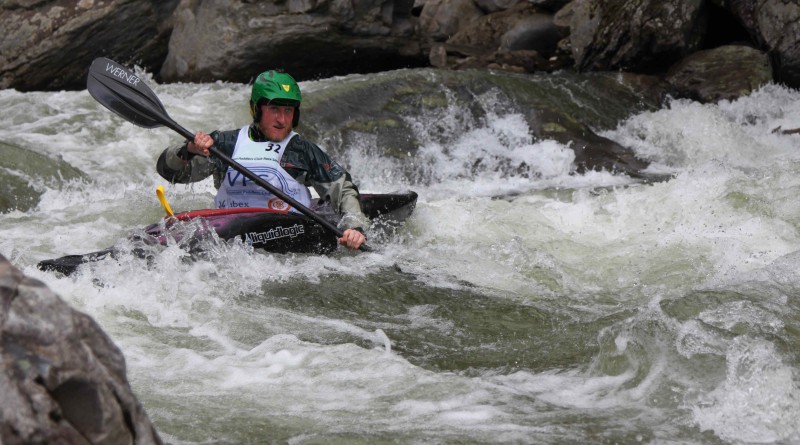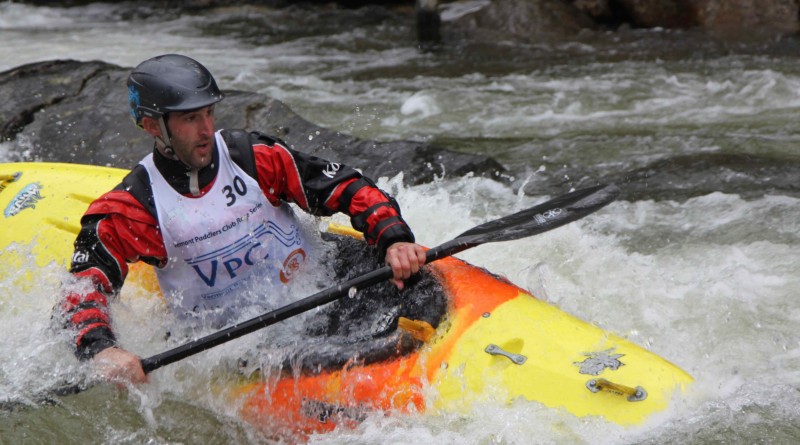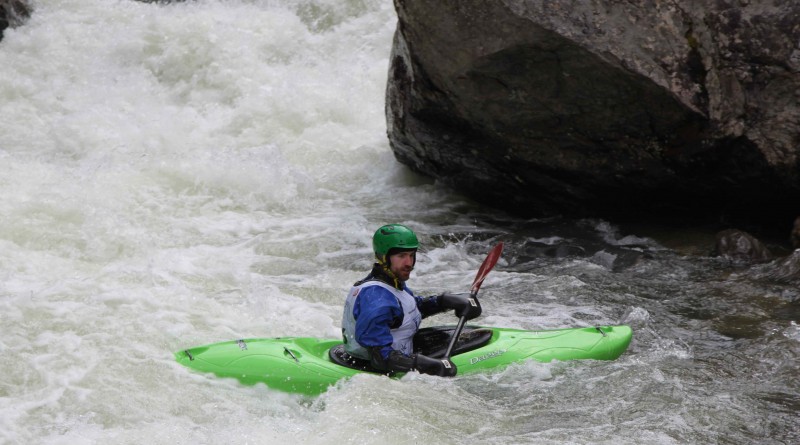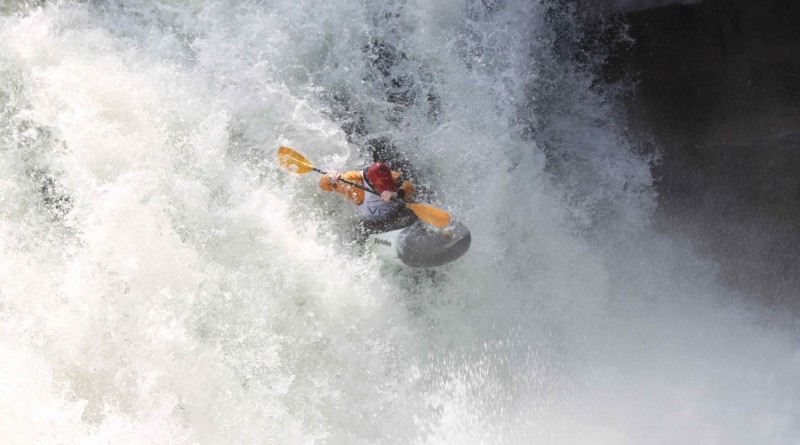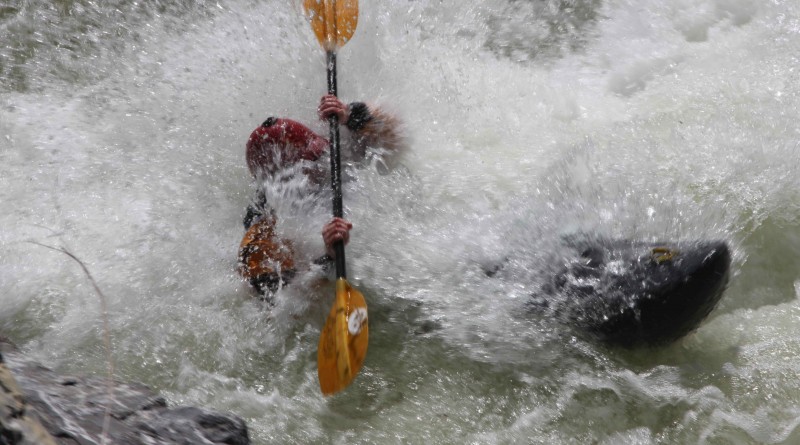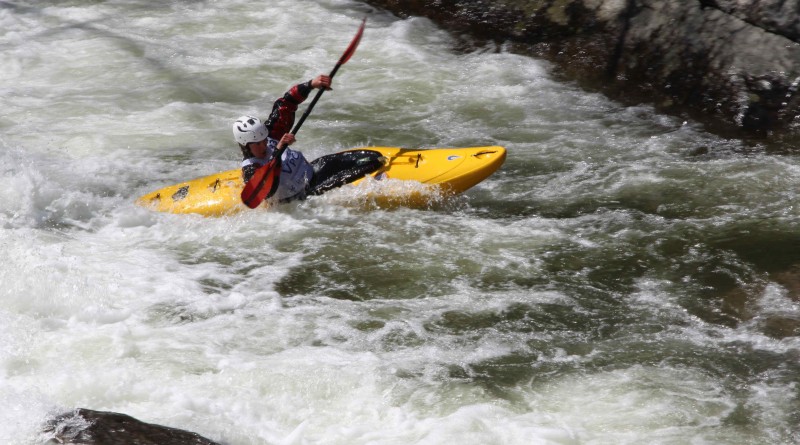Paddlers challenge New Haven rapids in annual race
New Haven River hosts kayak race from Addison Independent on Vimeo.
LINCOLN/BRISTOL — More than three dozen paddlers plunged through fast-moving rapids and over 15-foot falls on the frigid New Haven River on a recent mid-April weekend in pursuit of prizes in a friendly, early-season competition.
The eighth annual New Haven Ledges Race was organized by the Vermont Paddlers Club, a statewide association of whitewater and flatwater paddlers that advocates for releases from dams around the state.
“The New Haven race is an event that we get excited for every year,” said race organizer and VPC President Ryan McCall. “It’s an event that draws paddlers from all over the state and the region. You’ll see local paddlers that participate every year and newer guys that are going for that next level.”
“This run, in particular, really displays every kind of good rapid that we like,” said paddler Mike Flynn, who had driven up the night before from Brooklyn, N.Y. “It has boulder gardens, slides and waterfalls. It runs frequently and it’s not long so it’s easy to get in lots of laps. It’s the perfect river for building up to more difficult runs. You get a lot of bang for your buck.”
Flynn had pulled into a parking space by the New Haven River’s edge around 2 that morning, waking with a stiff neck after sleeping a few hours in the back of his truck. Since the New York City area lacks whitewater paddling close by, he has to drive to Pennsylvania or the Adirondacks, home to some high-quality whitewater. But the New Haven River, he said, was in a class all its own.
Even with reliable spring flows that can be easily accessed from the road, paddler Ryan Lane added that the river demanded solid skills and planning before a kayaker puts in.
“It’s gnarly, quick and very technical,” he said. “Knowing what’s coming ahead, you’ve got to be proactive rather than reactive.”
Lane, 24, was fortunate enough to have a bed to sleep in after making the drive from Albany, N.Y., earlier in the week. Despite being well rested, he still complained of jittery nerves as the start of the race drew near. He had already run the course twice.
“I’m trying to memorize the rapids,” he said. “The ledges are sketchy as hell to set up. But I’ve got to go hard over the Toaster, come up, slap the buoy and hope all is well.”
The paddling nonprofit American Whitewater describes the stretch of the New Haven River next to Lincoln Road between Lincoln village and Bristol village as a classic whitewater run in Vermont. When water levels are at their normal height, the 1.3-mile stretch of river is classified as a difficult class four, with multiple rapids and drops (whitewater paddling runs are classified from one, the easiest, through six, typically described as nearly impossible and extremely dangerous). In the spring, melting snow pushes water levels even higher.
The New Haven Ledges Race had been scheduled for the first weekend in April, but was delayed due to remaining snow and ice that blocked up most of the river. Saturday’s race featured air temperatures in the 60s. Water temperatures were in the mid-30s.
“Cold enough to give you a slight headache,” said Eric Adsit from Lowville, N.Y.
The race attracted 39 paddlers from around the Northeast and Quebec.
Many paddlers, like Robert Paulsen, had already made a few investigatory runs the previous weekend or even earlier that day before the race. Flow rates on race day were measured at 600 cubic feet per second, slightly lower than what would have been ideal, but race organizer McCall said Vermont paddlers are used to low water levels.
Paddlers entered the course by way of a wooden ramp lined with AstroTurf. After plunging into the river, paddlers picked their way through a series of rock gardens and a section of steep drops called “the Ledges.”
“The key in this river is to stay smooth rather than try and go fast,” said paddler Matt Young from Stowe. “If you try and push the boat, you wind up hitting a lot of rocks. You’ve got to find the path of least resistance.”
During the race, paddlers rotated safety positions, taking turns lining the shoreline with “throwbags,” long extensions of rope enclosed in a pouch that can be tossed to a paddler in need of assistance. Paddlers wore helmets, reinforced Gore-Tex dry suits and whitewater-specific lifejackets equipped with whistles and lightweight titanium rescue knives strapped within easy reach.
The course culminated with “the Toaster,” the largest and most intimidating feature on the course. Located close to the intersection of Route 116 and Lincoln Road, the waterfall (locally called Bartlett Falls) plunges over a 15-foot ledge into a pool. On Saturday, most paddlers hesitated, picked a narrow line over the lip and disappeared momentarily in the spray of the waterfall before reemerging below.
“Right before that water, I just try and smile,” Young said. “This waterfall in particular is fairly safe and non-consequential. I try to let it fly, maintain my speed and go get that buoy.”
After surfacing from the drop, paddlers make a sprint to the finish, touching a buoy suspended from a rope to stop the clock.
The race lasted well into the afternoon with most paddlers taking two runs. By the end of the day, the worst damage sustained was a broken paddle. The most serious injury was a bloody nose. Justin Beckwith of Waitsfield won with a time of 4:04. He was followed by brothers Rogan and Cully Brown, who came from Burlington and Durango, Co. They finished with times of 4:11 and 4:13, respectively.
In the women’s division, Catherine Hull from Richmond won with a time of 5:32, followed by Ellen Ludlow of Lexington, Mass. with 6:45. Leanne Bernier of Franconia, N.H. did not finish.
Robert Paulsen practiced the run nine times before Saturday’s race, and twice went through some of the more technical rapids upside down. But he didn’t complain; instead, he bound up the scrapes on his hands with duct tape and hiked back to the start to try again.
“You take the hits and roll with them as long as it’s not anything too serious,” he said.
The 21-year-old from Saratoga Springs, N.Y. works 10-hour shifts at night doing construction, which gives him four days off to paddle. To be out on — or sometimes in — the water was a welcome break.
“This is the most difficult paddling I’ve done,” he said. “But it’s also a beautiful location and the people have been so friendly.”

